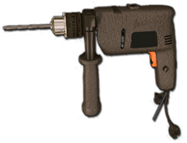Preparing Installation Tools and Accessories
Table 1 and Table 2 show the tools and accessories required for installing a switch.
| Tool | Description | Picture |
|---|---|---|
| ESD wrist strap | Used to prevent electrostatic discharge. Wear the strap on your wrist and insert the cord into the ESD jack on the cabinet. |  |
| ESD gloves | Used to prevent electrostatic discharge. |  |
| Protective gloves | Used to protect hands against lacerations and abrasions. |  |
| Utility knife | Used to cut open cartons. |  |
| Measuring tape | Used to measure distance. |  |
| Marker | Used to mark the installation position of components. |  |
| Flat-head screwdriver | Used to turn slotted-head screws and bolts. |  |
| Phillips screwdriver | Used to turn cross-head screws and bolts. |  |
| Diagonal pliers | Used to cut insulation tubes and cables. |  |
| Network cable tester | Used to test the connectivity of network cables. |  |
| Multimeter | Used to test the electrical characteristics, such as voltage, current, and resistance, of the switch, cabinet, and cables. |  |
| Hammer drill | Used to drill holes with appropriately sized drill bits (selected based on depth of holes and type of expansion bolts). |  |
| Adjustable wrench | Used to turn hex or square bolts and nuts. |  |



